We have to be honest. Mango chutney isn’t usually our thing. The grocery store mango chutney sold in the international aisle is usually overly sweet, gloopy thick, and just not good!
But it turns out that version of mango chutney isn’t representative of the many different types of mango chutneys found across the many regions of India!
India is a large place with many different cultures and cuisines, and there seem to be just as many versions of this famous chutney! In some parts of India, green unripened (also called raw) mango is used with just a few spices. In other parts, ripe mangoes are cooked with many spices. Our easy mango chutney recipe falls between these two extremes.
What is Chutney?
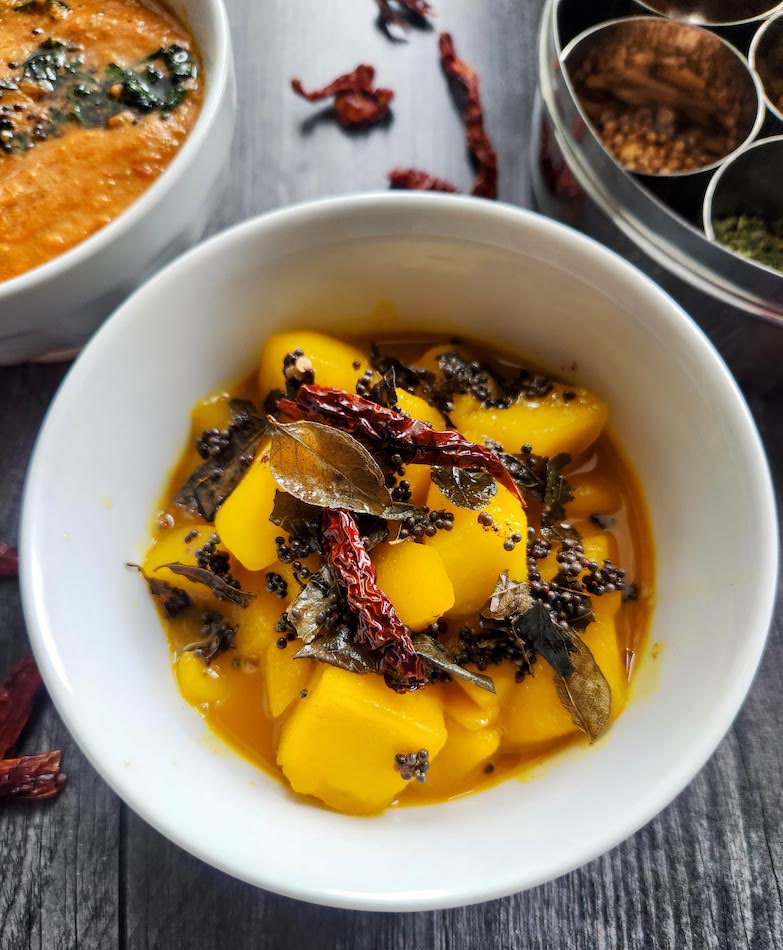
A SpiceTopia customer recently asked us just what a chutney was. And we admit that we were stumped to describe exactly what a chutney is!
Chutneys are chutneys. It was hard to verbalize what makes a chutney, well, a chutney, so we got to thinking and reading. Although chutneys are different across the subcontinent of India, they all have intense flavors that bring excitement to every day, more basic foods. The base of a chutney can be fruits, vegetables, and/or herbs, and spices add a punch of flavor to the base!
In fact, we realized most cultures have these little condiment dishes similar to chutneys. Think salsas, relishes, sambars, and pickles. Read more about it in our What Is Chutney.
Mango Chutney Ingredients
Spices.
Turmeric.
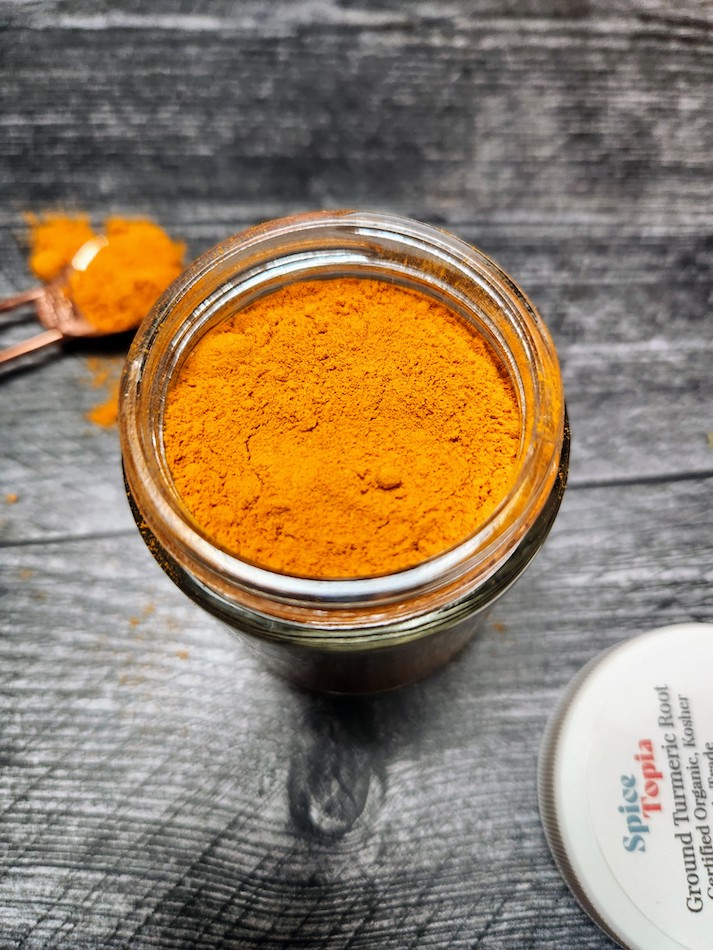
Turmeric, this vibrant yellow spice with its earthy aroma and warm, bitter flavor, is a staple in Indian cuisine. It adds just a touch of earthiness to the spicy sweetness of the mangos in this recipe.
Mustard Seeds.
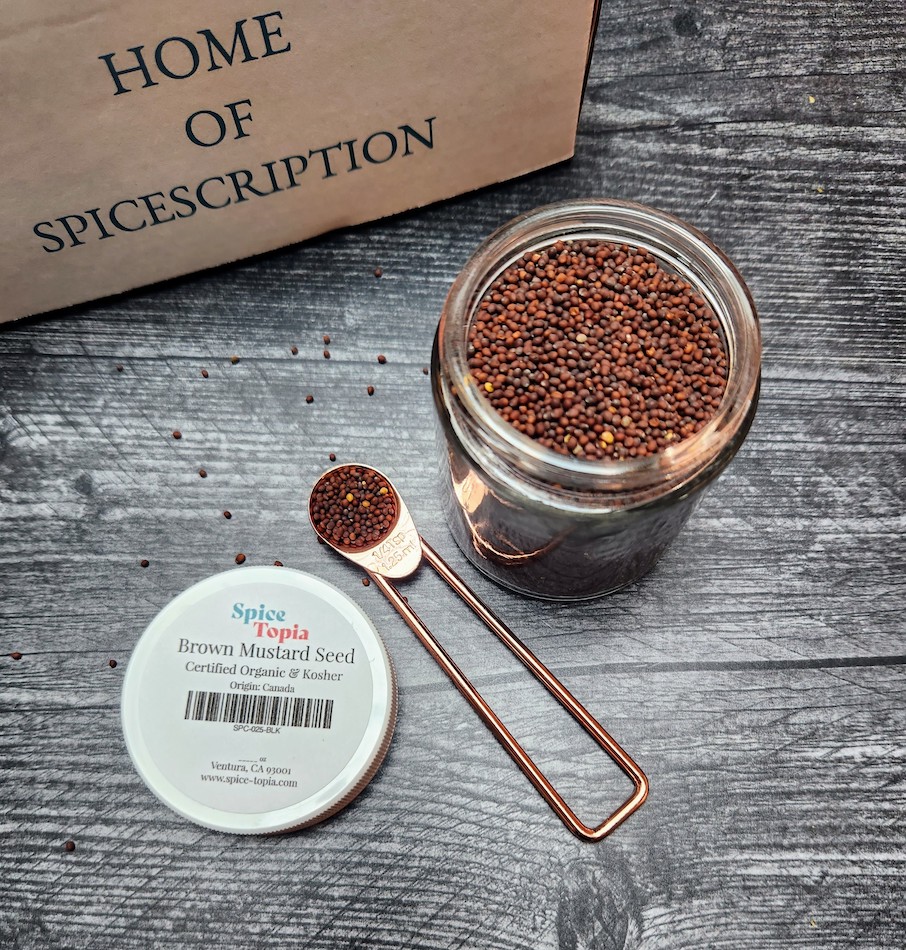
Mustard seeds add a crunchy texture to this chutney recipe. Frying the mustard seeds actually removes much of their bitterness and brings out floral notes, which pairs so well with the spicy sweetness of the mango.
Curry Leaves.
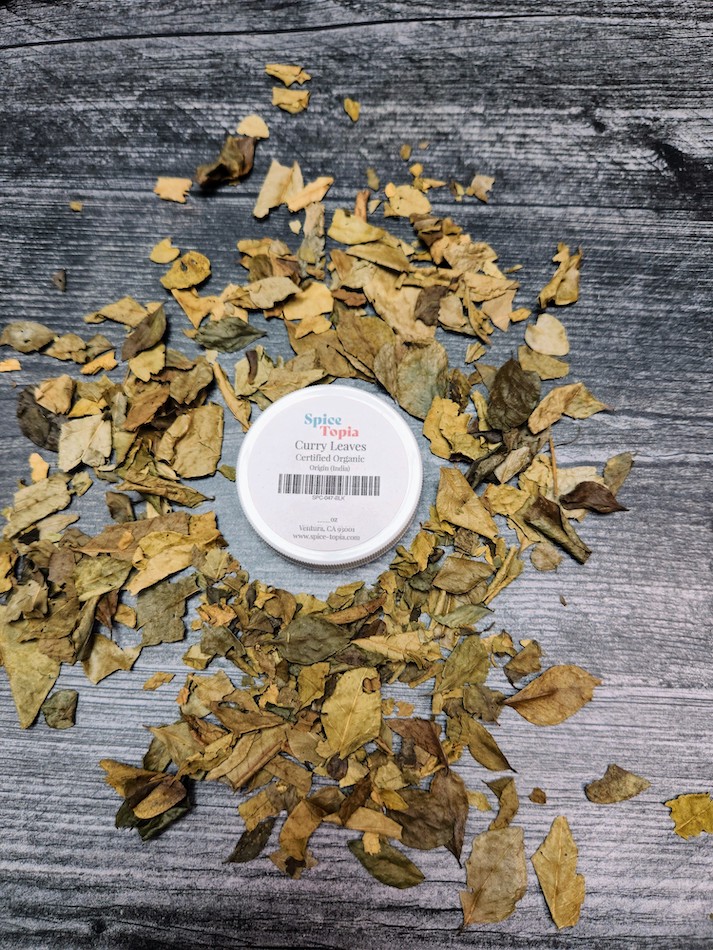
Curry leaves have an understated flavor that is faintly spicy and bitter with citrus undertones. The flavor of curry leaves is sometimes described as an umami flavor–and we think it does have a slight herbaceous umami flavor.
** Don’t confuse curry leaves with curry powder. Curry powder is a combination of spices–sometimes curry leaves are included in curry powder. On their own, curry leaves will not provide a curry flavor. You can learn more about curry powder in our Story of Curry (link to blog post) article.
Byadgi Chili Peppers.
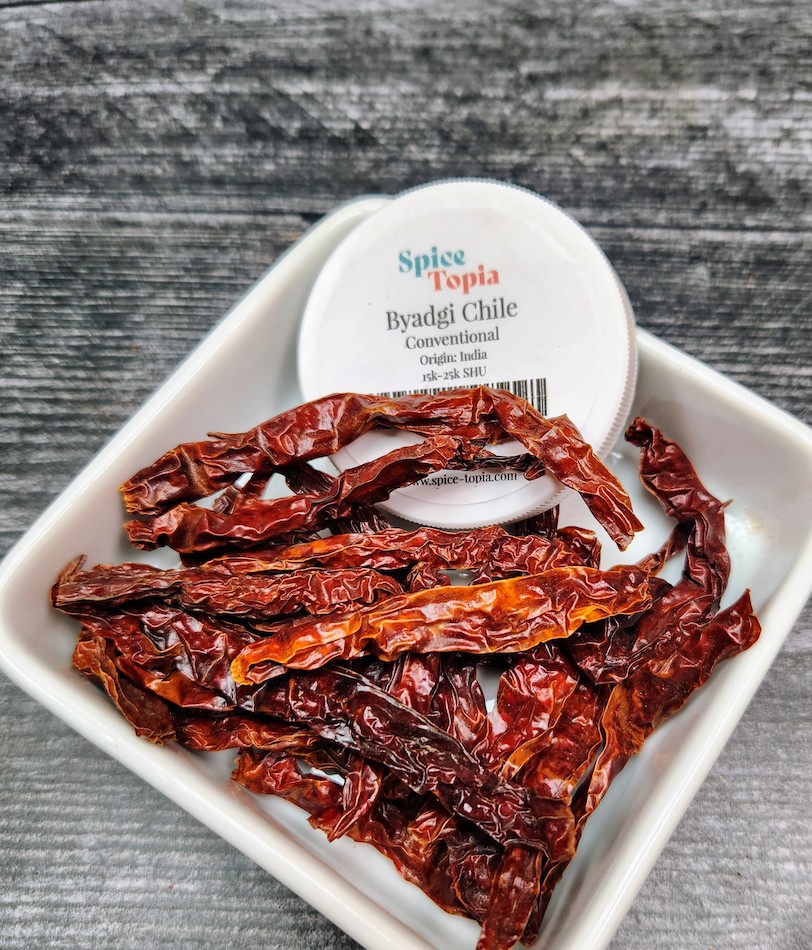
Byadgi Chilis are not extremely spicy, but do have a lingering heat that you will continue to feel in the front of your mouth. Its warm earthy flavor has a bit of sweetness, making this the traditional chili used in many Indian recipes.
Asafoetida.
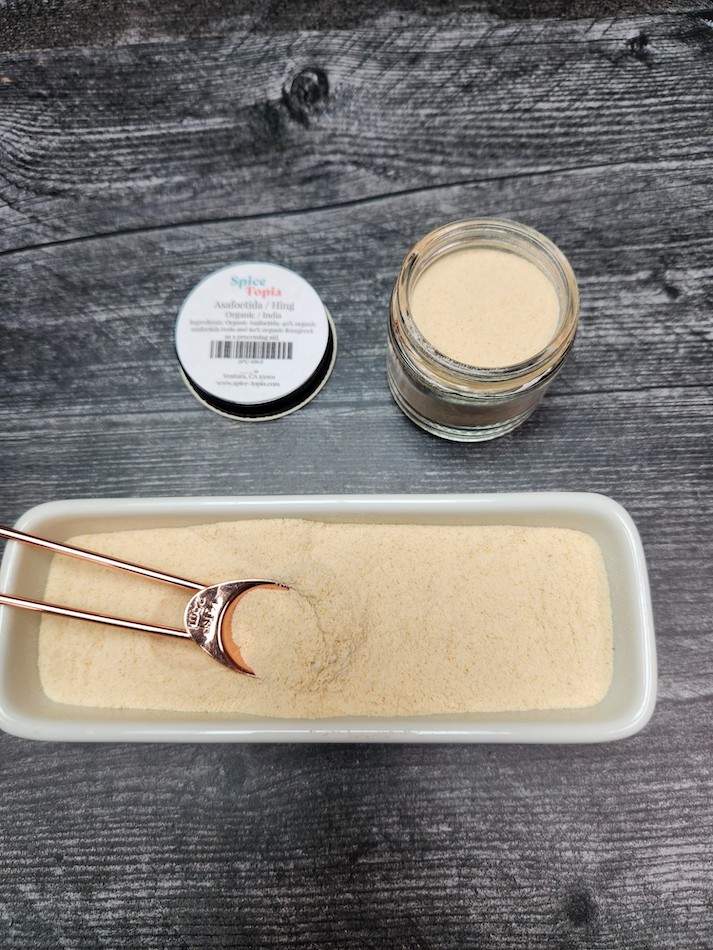
Also known as Hing, Asafoetida is an essential ingredient in many cuisines throughout India. Some Hindus and other religious groups avoid eating onions and garlic; asafoetida can be used to replace those flavors. Its flavor is pungent, slightly fermented, and sulfuric, much like garlic and onions. You’ll notice its strong aroma immediately disappears as it hits the hot oil.
Learn more about this uniquely Indian spice!
Ginger. This recipe is best made with fresh ginger. If you don’t have fresh ginger available, you can substitute Dried Ginger, but use just a scant pinch as too much dried ginger will impart a bitter taste.
Mangos.
As mentioned above, Mango chutney recipes across India vary in the type of mango used. Our recipe calls for mangos with flesh that has turned yellow, but are still firm. At this point of ripeness, the mango does have a bit of the unique spiciness that makes mangos special, but not all the sweetness that will come when the mango fully ripens.
Technique: How To Make Mango Chutney?
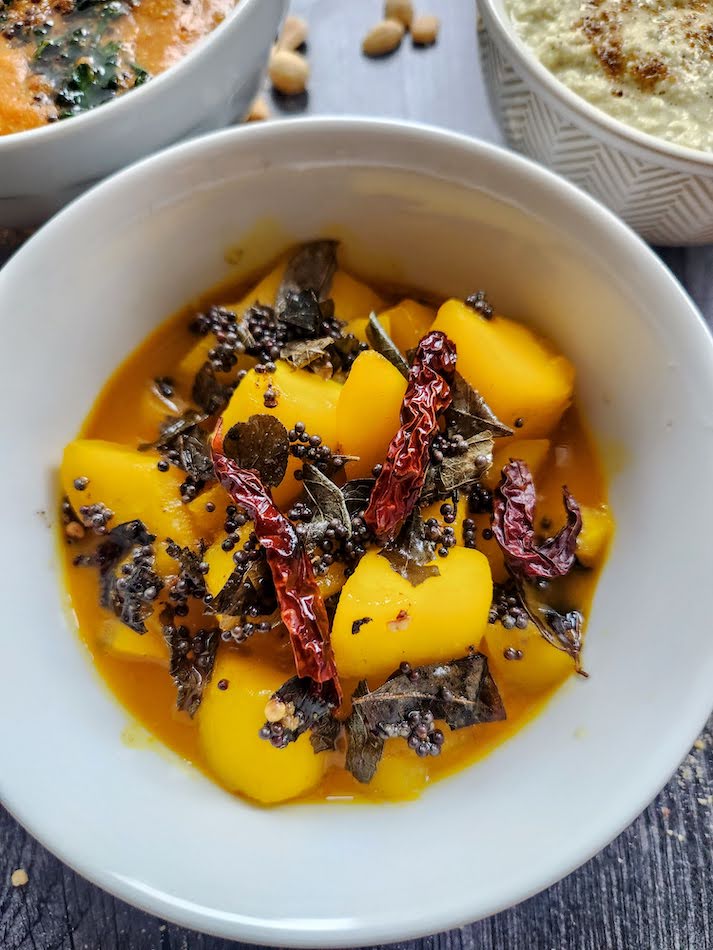
This recipe is fairly straightforward, but is made in two distinct steps.
First combine the water, turmeric, brown sugar, ginger, salt, and vinegar. Bring to a boil to dissolve the sugar. Then add the mango and cook it down until the liquid just begins to thicken up and become syrupy.
Next, you’ll temper the remaining spices in oil before pouring them over the mango chutney mixture. This step has many names in Indian cuisine (tadka and chhong to name a few) and is used in many Indian recipes. When you temper spices in oil, you not only wake up those spice flavors and aromas, you also create an intensely flavored oil that adds a richness and depth to your overall dish.
And that is all there is to making your own homemade mango chutney! We guarantee it will be so much better than any supermarket version!
What Do You Use Mango Chutney For?
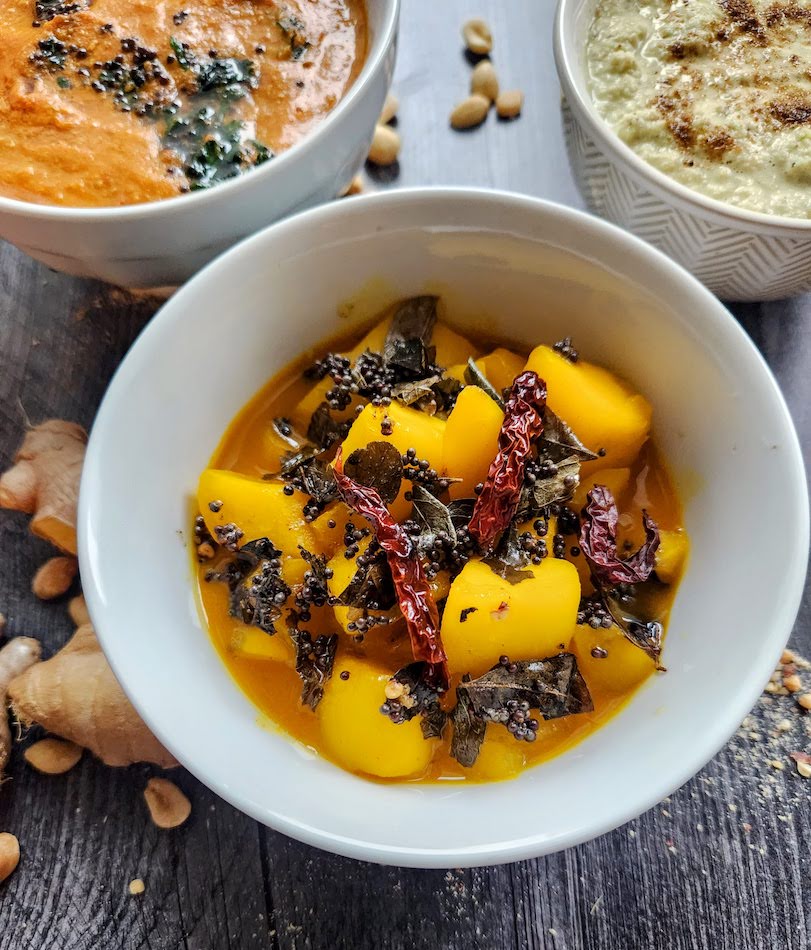
Serve Mango Chutney with your next Indian recipe.
Traditionally, mango chutney is paired with spicy Indian foods as the sweetness of this chutney helps to balance the spice. This Indian chutney recipe is also a delicious accompaniment to Indian appetizers like samosas, pakoras, and papadum.
Use Mango Chutney as a glaze for chicken, pork, or shrimp.
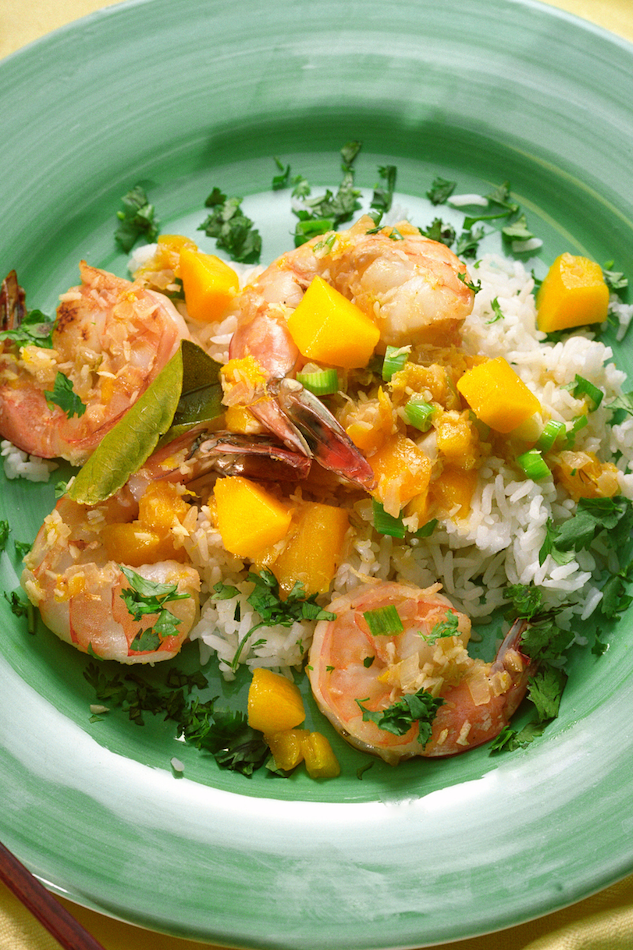
Having a batch of mango chutney in your fridge makes it easy to add flavor to a basic protein.
- Sauté a few chicken breasts, purée this chutney, spread across the sautéed chicken breasts, broil until the chutney bubbles!
- Combine half of this mango chutney recipe with a few tablespoons of butter. Cook until thick and shiny in a small saucepan (about 4–5 minutes). Pour over cooked shrimp.
- Season a pork tenderloin with salt and garam masala (link to product page), pour mango chutney over the pork, and roast at 375°F until the pork is cooked to your liking.
Use Mango Chutney as a sandwich spread.
Mango chutney adds a sweet and savory pop to just about any sandwich situation!
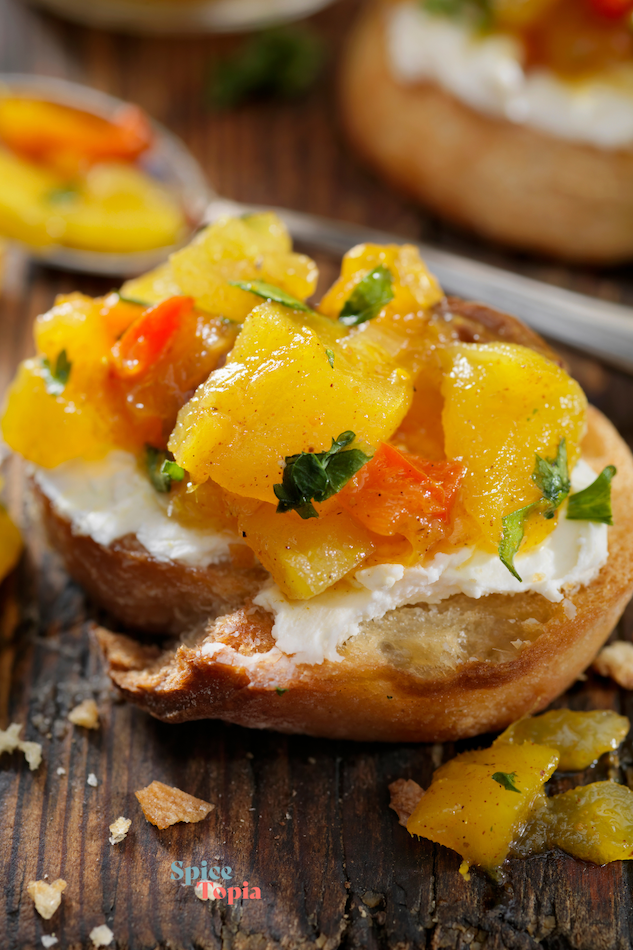
Try mango chutney on a
- Bagel with cream cheese
- Grilled cheese with ham
- A Curry Chicken Salad Sandwich
- Turkey and Cheese Sandwich
Serve with Grilled Meats.
Mango Chutney goes well with burgers, grilled chicken and fish, lamb chops, and shrimp skewers. We even enjoy mango chutney served alongside grilled sausages!
Don’t forget to add Mango Chutney to your next cheese or charcuterie board!
Add a small bowl of mango chutney to your next meat and cheese platter! We especially enjoy this Indian chutney with sharp cheese and spicy meats. Chutney is also an essential component of the English ploughman’s lunch (a simple board of cold cuts, bread, butter, pickles, cheese, and chutneys).
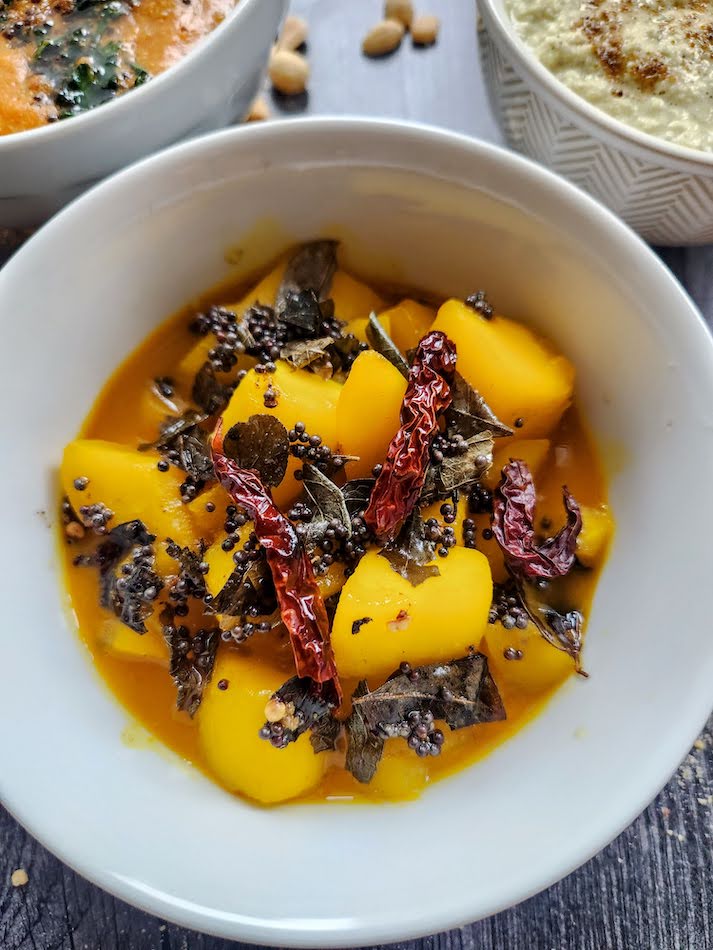
Let’s Get Cooking!
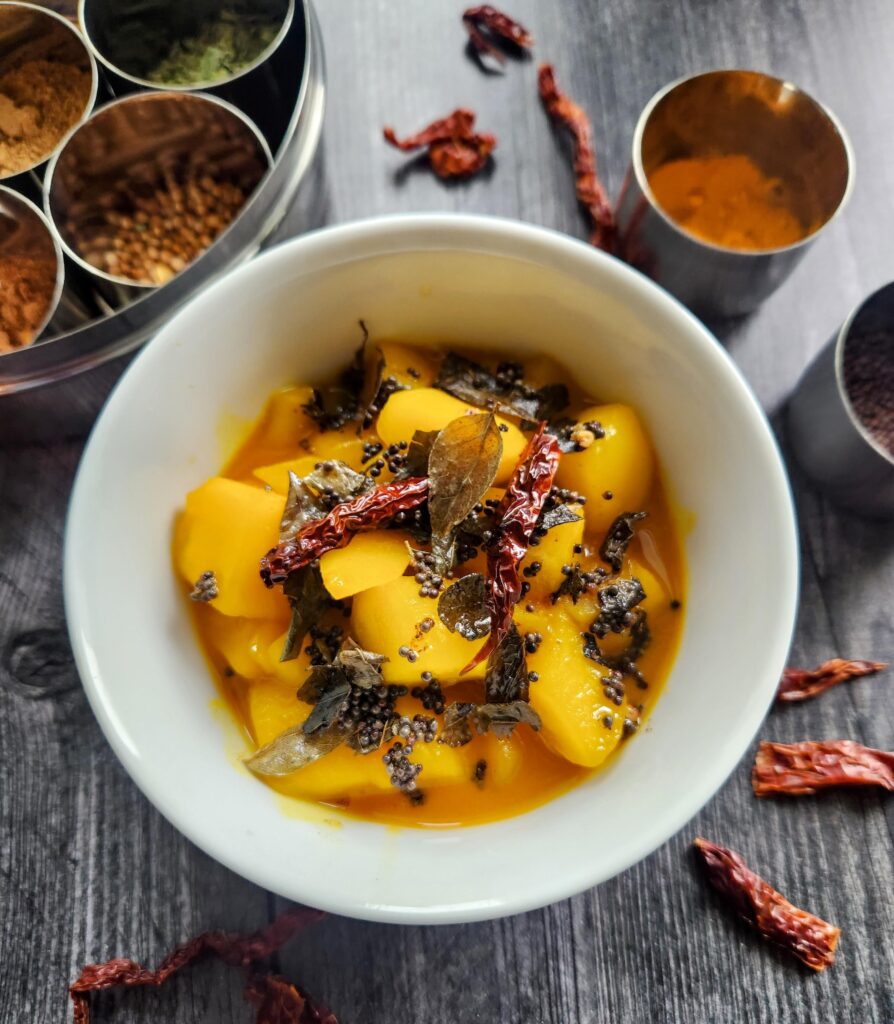
Mango Chutney
Description
An Easy Mango Chutney recipe full of flavor! Sweet and spicy, it's delicious as a spread, dip, or enjoyed with a variety of Indian curries and dishes!
Ingredients
Instructions
-
In a medium saucepan add ½ cup water, ½ teaspoon turmeric powder, 2 tablespoons brown sugar, ½ teaspoon freshly grated ginger, ½ teaspoon Pacific Flake Sea Salt, and 1 teaspoon vinegar. Over medium heat, bring to a boil. Stir until the sugar dissolves.
-
Add mango. Stir everything together. Cover the pan with a lid and turn down the heat to simmer. Simmer for 6–7 minutes, or until the mango just begins to break down and look cooked. Liquid should be a bit syrupy.
-
Remove from the heat and set aside.
-
Over medium high heat, heat the oil and mustard seeds until the mustard seeds begin to dance. Then add the 2 dried Byadgi red chilies, 1 tablespoon curry leaves, and 1 small pinch of asafoetida. Stir and cook for 30–50 seconds.
-
Pour over the mango chutney mixture. Stir together.
-
Enjoy with your favorite Indian dishes or add a bit to your next bowl of oatmeal, mac and cheese, or roast beef sandwich!


